Teaching Book Writing Under Novel Conditions

I’ve been resting my shoulder and arm due to what I finally discovered is a rotator cuff injury. I’ve been afraid to see any doctors given the risk of being in a medical-related facility. So I put off calling my doctor for three weeks. I know, a bit crazy, but also somehow careful, right?
I still hadn’t discovered Google Docs voice, so I typed the occasional email one handed and did little other work besides supporting the emerging authors in my book writing program, which has been an education in itself.
[bctt tweet=”Writers Under Pressure Require #Creative Approaches #WritingTips” username=”LisaTener”]
Many of the course participants work in healthcare: a COO providing leadership for an entire hospital and its many teams, a Canadian psychiatrist finding herself now in charge of a new special unit for her hospital, psychologists, a healthcare leadership consultant, two patient advocates, one of whom runs a small nonprofit while parenting and caregiving for two “medical zebras,” that is, children with complex diagnoses.
Normally, by this time, many participants would be celebrating completion of a first draft or first draft with some holes. Others would be close. A few would be revising their goals. This year, those struggling on the front lines of healthcare return home exhausted each night. Others find their book concepts shifting as they incorporate how this new normal affects their readers and topic.
For some entrepreneurs in class, social distancing has wiped out their major source of income: in-person training and consulting. They are faced with whether to hunker down and focus on writing their books, trusting that their income will be replaced in time, or whether to focus on replacing the lost income now and reducing their writing hours. Others find themselves working harder than ever to support clients in the changing business landscape.
Varied Book Writing Challenges

Not everyone has been writing. Not everyone is able to make it to class. It’s my job to figure out how to support them, how to keep them connected to their books, how to help them make progress in these demanding times and yet to give space to those who need it. For one person, we can reframe the writing of the book as a lifeline, feeding their soul. For another, already stretched too thin now in their front line work, the book needs to take a back seat, but we can still move it along with a few notes, or voice recording a recent anecdote to write in depth in the future.
My job is not that different from parenting teenagers in that I have no clear answers. I fumble my way in the dark. Teaching becomes an experiment. My lesson plans go out the window and I try to discern what the group needs at this moment.
One week we focus on rethinking goals, schedules and book concepts. We brainstorm how to get back in the groove. The next week, I scrap the planned marketing-oriented lesson, which is creative and fun but seems tone-deaf to the world we find ourselves in. Instead we further explore secrets of good writing, revision, topics that feel more related to the essence of the books and their messages.
And of course the idea of a “group need” is, in itself, an illusion. Some writers need to find time and space to write. Several are reconsidering aspects of their book concept or outline in light of the pandemic. Some are ready for more instruction in finding voice. Some want to explore publishing options and next steps. How do I address these diverse needs in each class without someone feeling their time has been wasted, their needs not met?
Addressing Various Readers’ Needs
 Similarly to my teaching dilemma, when writing a nonfiction book—especially, self-help, how-to or business—one must clarify who one’s readers are and what they need. If you cast your net too widely. it’s impossible to write the book that the diverse group needs and have them all see the book as a fit for them. Yet, not all your readers will be in the exact same place with the exact same needs. You will need to think about various groups of readers.
Similarly to my teaching dilemma, when writing a nonfiction book—especially, self-help, how-to or business—one must clarify who one’s readers are and what they need. If you cast your net too widely. it’s impossible to write the book that the diverse group needs and have them all see the book as a fit for them. Yet, not all your readers will be in the exact same place with the exact same needs. You will need to think about various groups of readers.
Is your book changing as the needs of your readers and the world may be changing at this time?
This is where it gets interesting, where you can make decisions that will help your book find the ideal balance between a large broad market and a niche market, where you can get creative:
- Adding side bars for the scientific information that some of your readers will crave and others skip
- Including special sections or chapters for a specific segment of the audience
- Sending readers to a website or video that offers more depth for their particular situation
Let’s Hear From You.
What are you doing to keep your book alive?

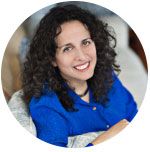 I’m sure you want to write a book that makes an impact—inspires, supports, guides, creates positive change for readers. The kind of book readers share with friends, buy as gifts, and recommend on Facebook and Goodreads.
I’m sure you want to write a book that makes an impact—inspires, supports, guides, creates positive change for readers. The kind of book readers share with friends, buy as gifts, and recommend on Facebook and Goodreads.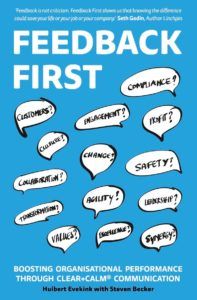
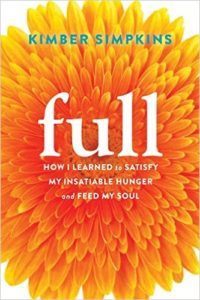 esitgious awards: 2017 Next Generation Indie Book Awards and 2017 New Generation Indie Book
esitgious awards: 2017 Next Generation Indie Book Awards and 2017 New Generation Indie Book 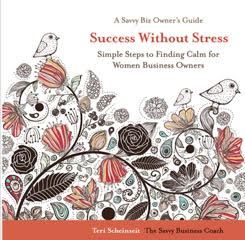 For instance, in Success Without Stress, Teri had a clear image of her reader: a business owner with a vision for how her business should be and where she wants her business to go, but who’s juggling so many priorities and projects, she constantly in a state of stress, unable to get out of crisis mode. The reader is a victim of her own success. And she desperately wants to change that.
For instance, in Success Without Stress, Teri had a clear image of her reader: a business owner with a vision for how her business should be and where she wants her business to go, but who’s juggling so many priorities and projects, she constantly in a state of stress, unable to get out of crisis mode. The reader is a victim of her own success. And she desperately wants to change that.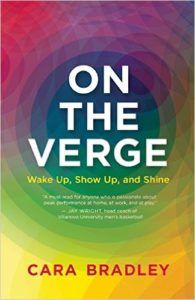 In On the Verge, Cara Bradley offers an “At a Glance” summary of each mindfulness practice at the beginning of each chapter. Readers immediately learn the purpose and benefits of the practice addressed in that chapter, as well as a brief version of the “how-to” of it.
In On the Verge, Cara Bradley offers an “At a Glance” summary of each mindfulness practice at the beginning of each chapter. Readers immediately learn the purpose and benefits of the practice addressed in that chapter, as well as a brief version of the “how-to” of it. That’s why I often recommend that before someone even have a book concept consultation with me, they work through
That’s why I often recommend that before someone even have a book concept consultation with me, they work through 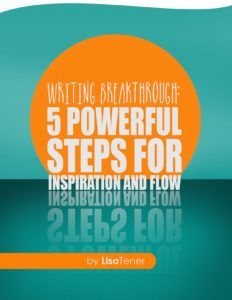 You will receive:
You will receive: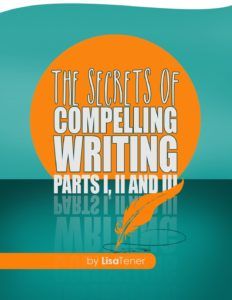 As incentive to get started on your book for summer, I am offering a FREE BONUS of the downloadable special report Secrets of Compelling Writing, which will help you self-edit your book for starters and make your writing come to life for your readers.
As incentive to get started on your book for summer, I am offering a FREE BONUS of the downloadable special report Secrets of Compelling Writing, which will help you self-edit your book for starters and make your writing come to life for your readers.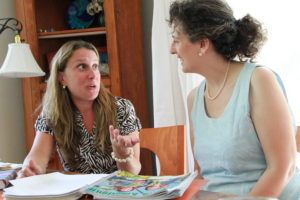 I hear you. And I absolutely LOVE helping authors get clarity and take their book concept from good to great (or even from chaos to clarity)! Here are three options below:
I hear you. And I absolutely LOVE helping authors get clarity and take their book concept from good to great (or even from chaos to clarity)! Here are three options below: “
“
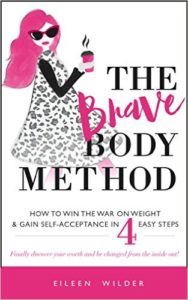
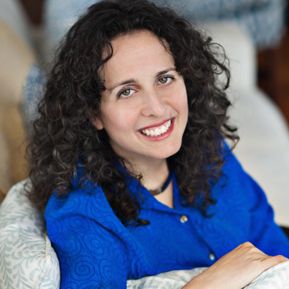 I’d like to share a story about my recent experience with simplicity because it points to a powerful strategy for book writing.
I’d like to share a story about my recent experience with simplicity because it points to a powerful strategy for book writing.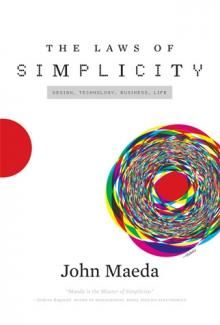 Then, I stumbled upon a book at the library, John Maeda’s The Laws of Simplicity, published at my Alma Mater (MIT Press). John got me thinking about how to simplify the process from class participants’ point of view. Rather than trying to give them everything at once, I thought about how they could access what they needed as needed and have one easy place to find the information when they most needed it.
Then, I stumbled upon a book at the library, John Maeda’s The Laws of Simplicity, published at my Alma Mater (MIT Press). John got me thinking about how to simplify the process from class participants’ point of view. Rather than trying to give them everything at once, I thought about how they could access what they needed as needed and have one easy place to find the information when they most needed it. Two of the most exciting parts of my work are when a client gets a publishing offer for their book and when a client gets recognized for the amazing work they are doing. Both of those things happened this week. While, I can’t reveal the publishing offer before the contract is signed, I can share Dr.
Two of the most exciting parts of my work are when a client gets a publishing offer for their book and when a client gets recognized for the amazing work they are doing. Both of those things happened this week. While, I can’t reveal the publishing offer before the contract is signed, I can share Dr. 
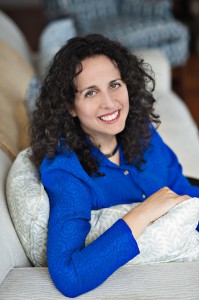




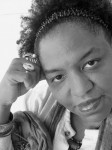

 Crystal Wilkinson is the author of Blackberries, Blackberries and Water Street, the latter a long-list finalist for the prestigious Orange Prize and short-listed for a Zora Neal Huston, Richard Wright Foundation Legacy Award. She is the recipient of the Chaffin Award for Appalachian Literature.
Crystal Wilkinson is the author of Blackberries, Blackberries and Water Street, the latter a long-list finalist for the prestigious Orange Prize and short-listed for a Zora Neal Huston, Richard Wright Foundation Legacy Award. She is the recipient of the Chaffin Award for Appalachian Literature.